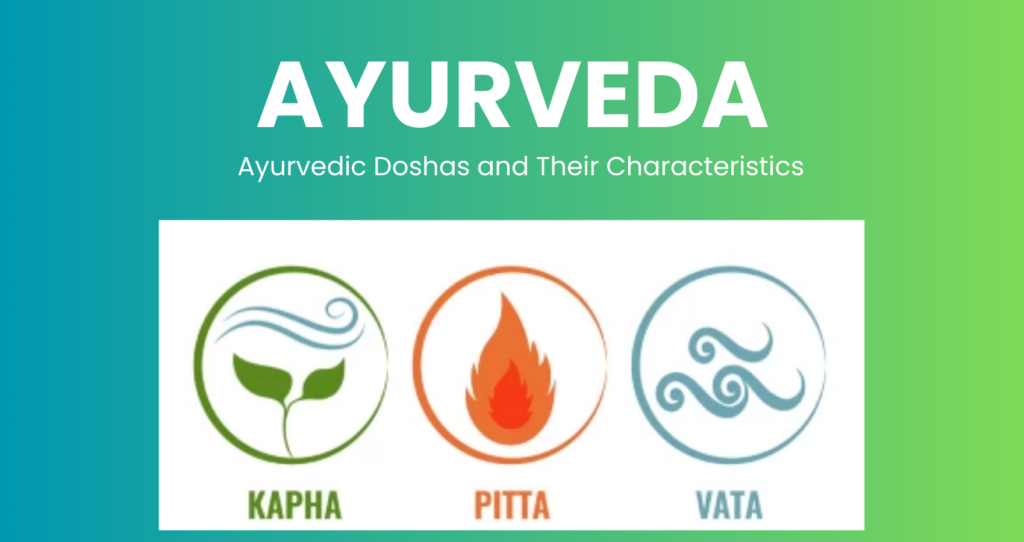
In a world where modern medicine often takes center stage, ancient healing practices like Ayurveda are experiencing a resurgence in popularity. Ayurveda, which originated in India over 5,000 years ago, is a holistic system of medicine that focuses on balancing the mind, body, and spirit for optimal health. In this blog post, we will delve into the basics of Ayurveda, including the concept of doshas and how understanding your body type can lead to a healthier, more balanced life.
1. What Is Ayurveda?
Ayurveda, often referred to as the “science of life,” is a holistic approach to health and wellness. It encompasses a wide range of practices, including diet, herbal remedies, yoga, meditation, and lifestyle adjustments. The core belief in Ayurveda is that each person is unique, and their health and well-being depend on the balance of three fundamental energies, known as doshas.
2. The Three Doshas: Vata, Pitta, and Kapha
Ayurveda categorizes individuals into three primary doshas, each representing a unique combination of the five elements (earth, water, fire, air, and ether):
Vata: Composed of air and ether, Vata types tend to be creative, energetic, and prone to imbalances related to anxiety, insomnia, and digestive issues.
Pitta: Comprising fire and water, Pitta individuals are often passionate, intelligent, and susceptible to imbalances like inflammation, acidity, and skin problems.
Kapha: With earth and water as its elements, Kapha dosha people are known for their stability, calmness, and are prone to conditions such as weight gain, congestion, and sluggishness.
3. Discovering Your Dominant Dosha
Understanding your dominant dosha is key to Ayurvedic health. You can identify your primary dosha through a simple questionnaire or consultation with an Ayurvedic practitioner. Once you know your dosha, you can tailor your diet, lifestyle, and daily routines to bring balance and harmony to your unique constitution.
4. Balancing Your Doshas
Balancing your doshas involves making conscious choices to counteract any excesses or imbalances in your dominant energy. For example, Vata individuals might benefit from grounding activities like yoga and warm, nourishing foods. Pitta types may find relief through cooling practices and foods, while Kapha individuals should focus on stimulating and invigorating activities.
5. Ayurveda’s Approach to Healing
Ayurveda offers a holistic approach to healing, addressing the root causes of illnesses rather than just the symptoms. It relies on natural remedies, such as herbal medicines, detoxification practices, and personalized diets to restore balance and promote wellness.
6. The Role of Ayurvedic Practitioners
To receive personalized guidance on Ayurvedic practices and treatments, it’s advisable to consult with experienced Ayurvedic practitioners. They can help you determine your dosha, provide tailored recommendations, and monitor your progress towards a healthier and more balanced life.
7. Ramesh Multispeciality Hospital: Your Destination for Ayurvedic Treatment
If you’re interested in exploring the benefits of Ayurveda and seeking professional guidance, consider visiting Ramesh Multispeciality Hospital in Pinjore. They offer a comprehensive range of Ayurvedic treatments, consultations, and therapies to help you achieve optimal health and well-being. Their team of skilled practitioners can assess your dosha, create personalized treatment plans, and guide you on your journey to a more balanced and harmonious life.
In conclusion, Ayurveda is a time-tested system of holistic medicine that can provide valuable insights into your unique constitution and help you lead a healthier, more balanced life. By understanding your dosha and following Ayurvedic principles, you can embark on a path to greater well-being and vitality. If you’re ready to explore Ayurvedic treatments further, Ramesh Multispeciality Hospital in Pinjore is your trusted partner on this journey to wellness.
